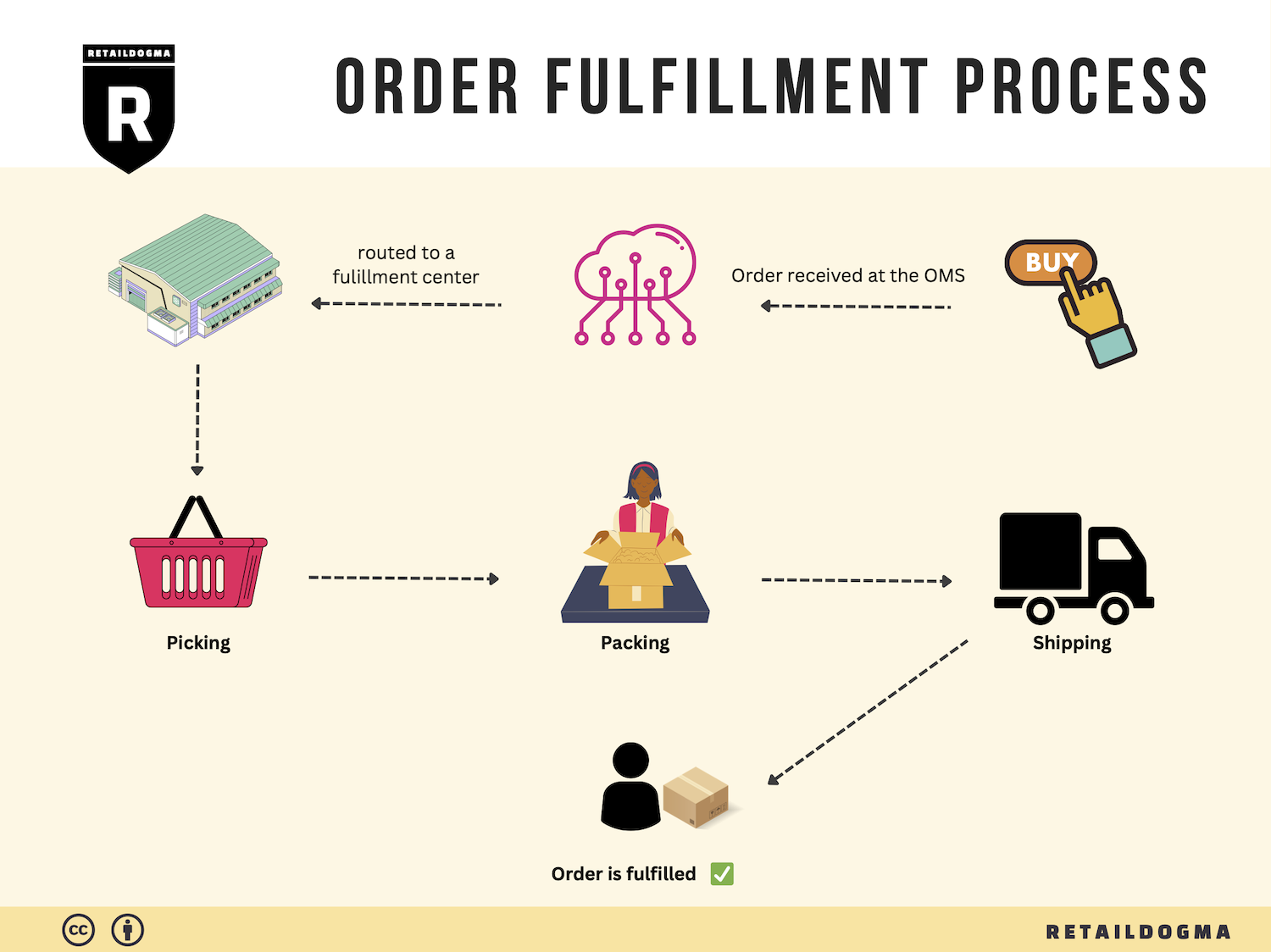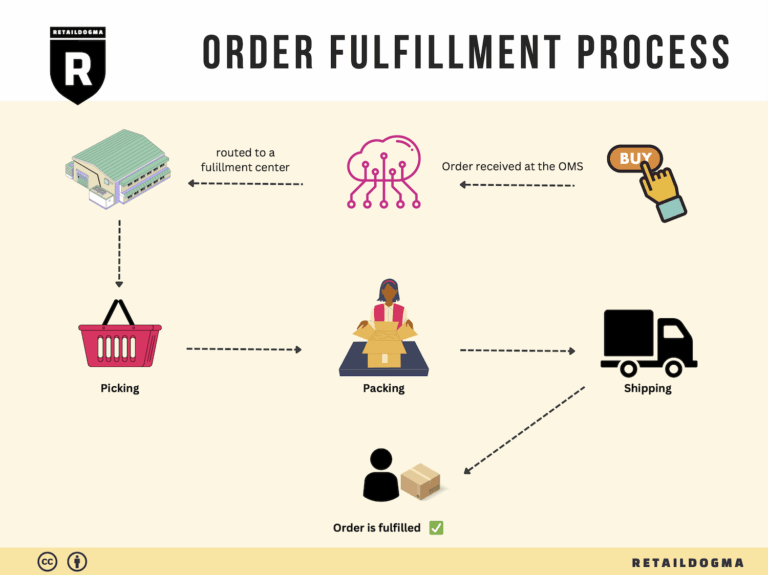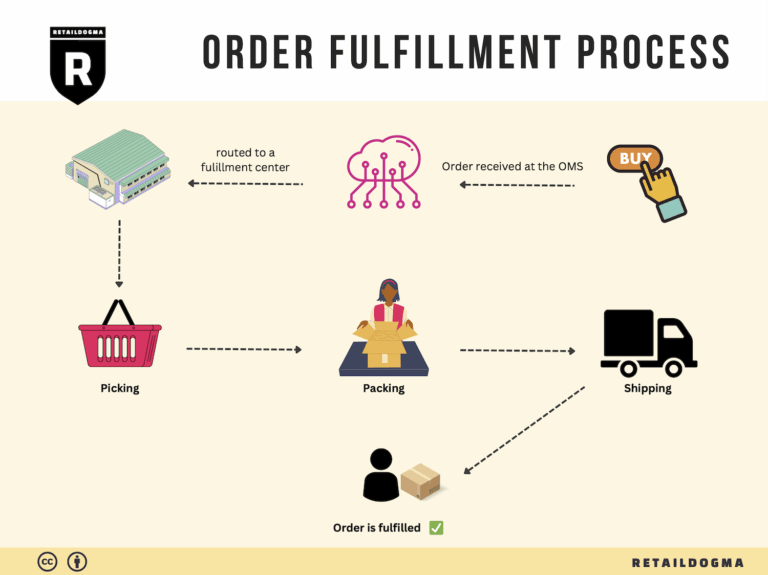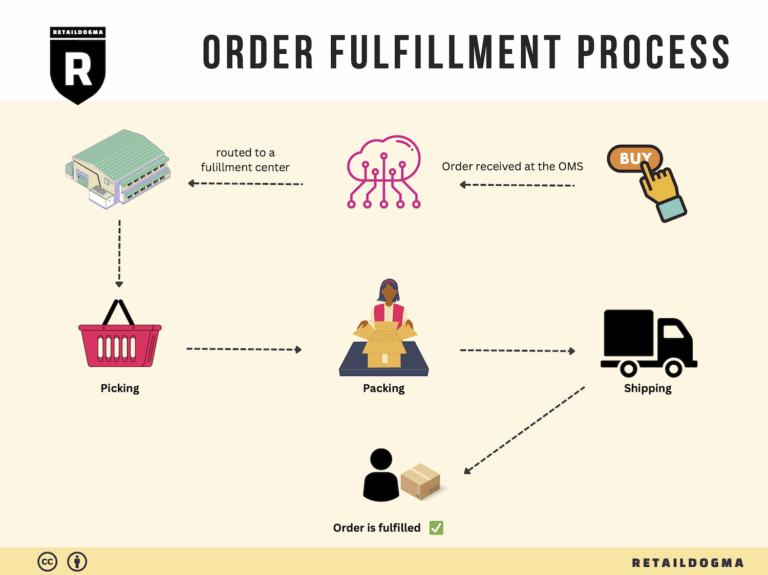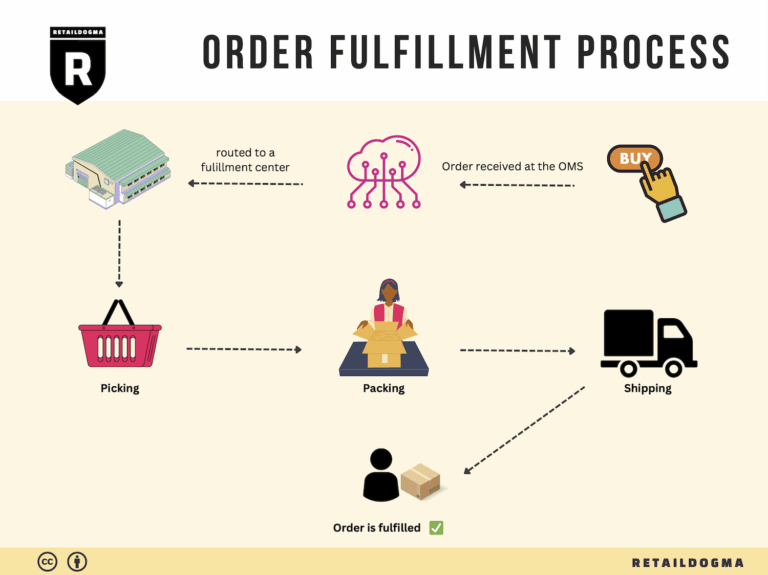Ecommerce Fulfillment Services: The Ultimate Guide (2025)
What is E-commerce Fulfillment? An Introduction for Growing Businesses
Understanding E-commerce Fulfillment
As an e-commerce business owner, you may have experienced the overwhelming task of packing and shipping orders. The excitement of growing sales can quickly turn into stress as you juggle inventory management, order processing, and logistics. This is where e-commerce fulfillment comes into play. Simply put, fulfillment is the process of getting a product from your inventory to your customer’s doorstep. It encompasses everything from storage and packing to shipping and handling returns.
For many growing businesses, choosing the right fulfillment strategy is critical to scaling operations effectively. As you expand, the complexities of managing logistics can become daunting. This guide is designed to help you navigate these challenges by breaking down the various fulfillment models available, including Third-Party Logistics (3PL) and Fulfillment by Amazon (FBA). Each model has unique advantages and disadvantages, and understanding them is key to making an informed decision.
We will also explore the core services involved in e-commerce fulfillment. From warehousing and inventory management to order processing and shipping, these services are essential for ensuring that your products reach customers efficiently and on time. Additionally, we will provide practical insights on how to choose the right fulfillment partner that aligns with your business goals and customer expectations. Factors such as reliability, technology capabilities, and cost will be discussed to help you find a partner that can grow with you.
Pricing is another critical aspect we will cover. Fulfillment costs can significantly impact your profit margins and overall customer satisfaction. We will discuss various pricing strategies, including how to effectively manage shipping costs and whether to offer free shipping or charge separately.
The goal of this guide is to empower you with the knowledge and tools needed to make smart decisions about your logistics. By understanding the intricacies of e-commerce fulfillment, you can streamline your operations, enhance customer satisfaction, and ultimately drive growth for your business. Whether you’re just starting or looking to optimize your existing processes, this guide will serve as a valuable resource on your journey to scaling your e-commerce operations.
What You’ll Learn In This Guide
- What is E-commerce Fulfillment? An Introduction for Growing Businesses
- The Order Fulfillment Process: From ‘Buy’ Button to Customer’s Door
- Comparing Fulfillment Models: In-House vs. 3PL vs. Dropshipping
- A Deep Dive into Amazon FBA: Pros, Cons, and Who It’s For
- Core Services Offered by Fulfillment Centers
- How to Choose a Fulfillment Partner: A 6-Point Checklist
- Understanding Fulfillment Pricing: A Breakdown of Common Fees
- Frequently Asked Questions (FAQs) about Fulfillment
- Conclusion: Is Outsourcing Fulfillment the Right Move for Your Business?
- Important Disclaimer
The Order Fulfillment Process: From ‘Buy’ Button to Customer’s Door
1. Receiving Inventory
The order fulfillment process begins with receiving inventory, which is a critical step that sets the foundation for effective logistics. When products arrive at your warehouse, they must be carefully checked against purchase orders to ensure accuracy in quantity and quality. This involves inspecting the condition of items and verifying that they match the specifications outlined in the order.
Importance: Proper receiving practices minimize discrepancies and potential issues later in the fulfillment process. An accurate inventory count is crucial for maintaining stock levels and preventing stockouts or overstock situations.
Key Term: SKU (Stock Keeping Unit) – Each product should have a unique SKU, which facilitates tracking and management of inventory. This identifier helps streamline the receiving process, ensuring that items are logged correctly into your inventory management system.
2. Warehouse Storage
Once inventory is received and accounted for, it is moved to the storage area of the warehouse. This step involves organizing products in a manner that optimizes space and accessibility. Effective warehouse storage solutions can include shelving, bins, or pallet racking systems, depending on the type and size of the products.
Importance: Efficient storage solutions not only maximize space but also enhance the speed of order fulfillment. The organization of the warehouse impacts how quickly items can be retrieved during the picking phase, directly affecting delivery times.
Key Term: FIFO (First In, First Out) – This inventory management principle ensures that older stock is sold before newer stock, which is especially important for perishable goods or items with expiration dates. Implementing FIFO helps reduce waste and ensures customers receive fresh products.
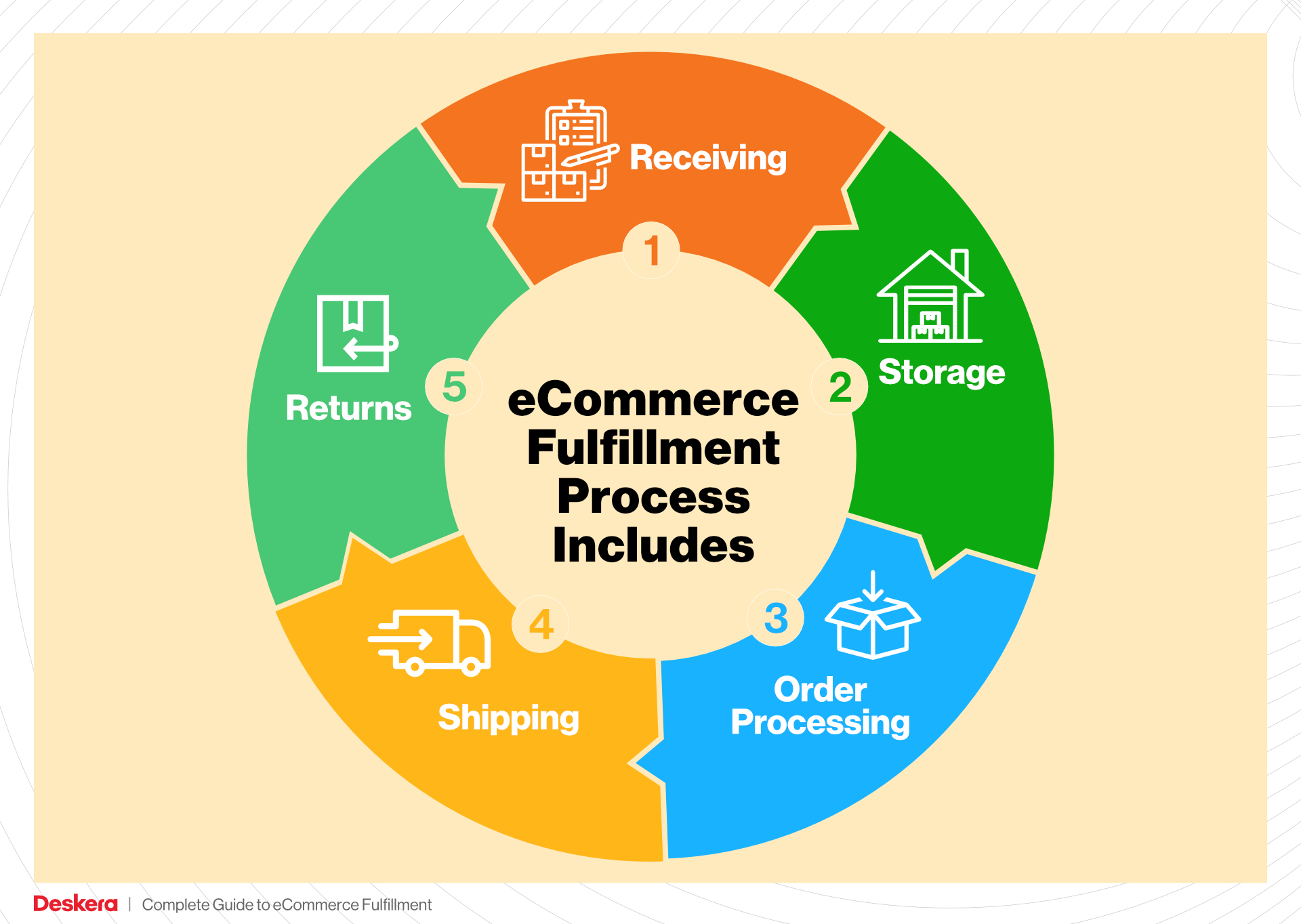
3. Order Picking
Order picking is the process of retrieving items from storage to fulfill customer orders. Once an order is placed, warehouse staff or automated systems will generate a pick list, which outlines the items needed for that specific order. This step can be performed manually or through automated picking systems, depending on the scale of the operation.
Importance: Accurate order picking is vital to customer satisfaction. Errors in this step can lead to incorrect shipments, which not only frustrate customers but can also result in costly returns and re-shipments. Efficient picking methods, such as batch picking or zone picking, can significantly improve order processing times.
Key Term: Pick List – A document or digital display that lists the items to be picked for each order. It guides warehouse staff through the storage locations, ensuring that all required items are gathered accurately and efficiently.
4. Order Packing
After items have been picked, they are moved to the packing station where they are prepared for shipment. Packing involves placing items in appropriate packaging materials, ensuring they are secure and protected during transit. This step also includes labeling packages with shipping information and any necessary documentation.
Importance: Proper packing is crucial for preventing damage during shipping and for ensuring compliance with carrier requirements. A well-packed order enhances the customer experience, as it reflects the care and quality of your brand. Additionally, clear labeling helps prevent delays in delivery.
Key Term: Packing Slip – An important document included in the package that lists the items shipped. It serves as a receipt for the customer and helps verify that the correct items have been sent.
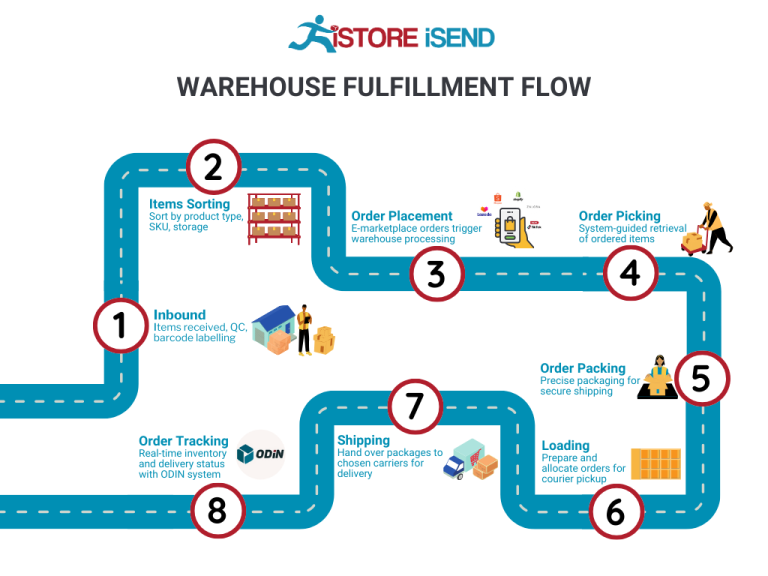
5. Shipping & Delivery
The final step in the order fulfillment process is shipping and delivery. Once orders are packed, they are handed over to shipping carriers for delivery to the customer. This step involves choosing the appropriate shipping method based on factors such as cost, speed, and destination.
Importance: Shipping impacts customer satisfaction and retention. Timely and reliable delivery can enhance the overall shopping experience, while delays can lead to dissatisfaction and lost customers. Additionally, effective shipping strategies, such as offering multiple shipping options or free shipping thresholds, can increase conversion rates.
Key Term: Last Mile Delivery – This term refers to the final step of the delivery process, where the package is transported from a distribution center to the customer’s doorstep. Optimizing last mile delivery is essential for improving delivery times and reducing costs.
By understanding and optimizing each of these five steps in the order fulfillment process, e-commerce businesses can enhance their operational efficiency, improve customer satisfaction, and ultimately scale their sales and logistics effectively.
Comparing Fulfillment Models: In-House vs. 3PL vs. Dropshipping
Fulfillment Model Comparison
| Model | Who Handles Inventory | Best For (Business Stage) | Key Advantage | Key Disadvantage |
|---|---|---|---|---|
| In-House Fulfillment | The business itself | Startups and small businesses | Full control over inventory and operations | Time-consuming and not scalable long-term |
| Third-Party Logistics (3PL) | A dedicated logistics partner | Growing businesses | Scales with business needs | Higher costs and less control |
| Dropshipping | Suppliers or manufacturers | New businesses or niche markets | Low upfront investment and minimal risk | Lower profit margins and less control |
In-House Fulfillment
In-house fulfillment is where a business takes complete responsibility for its inventory management, order packing, and shipping. This model is often favored by startups and small businesses in their early stages, as it allows for maximum control over the entire fulfillment process. Entrepreneurs can directly oversee every aspect of their operations, ensuring that the quality of packaging and shipping aligns with their brand standards. Additionally, handling fulfillment in-house can lead to lower operational costs, especially when order volumes are manageable. However, this model has significant drawbacks. As the business grows, the demands of storage, packing, and shipping can become overwhelming, leading to inefficiencies and potential delays in order processing. Furthermore, scaling operations requires additional resources, which can be a barrier for many small businesses.
Third-Party Logistics (3PL)
Third-party logistics (3PL) is a fulfillment model where businesses outsource their inventory storage, order picking, packing, and shipping to a specialized logistics provider. This model is ideal for growing businesses that are experiencing increased order volumes and need to scale quickly. 3PL providers have the infrastructure, technology, and expertise to handle logistics efficiently, allowing businesses to focus on core activities such as product development and marketing. A key advantage of using a 3PL is the ability to scale operations without the burden of investing in warehouse space and logistics staff. However, this convenience comes at a cost. Businesses often face higher operational expenses when utilizing 3PL services, and they may also relinquish some control over day-to-day operations. This can lead to challenges in maintaining brand consistency in packaging and customer service.
Dropshipping
Dropshipping is a fulfillment method where the retailer does not keep products in stock. Instead, when a customer places an order, the retailer purchases the item from a third-party supplier, who then ships the product directly to the customer. This model is particularly attractive for new businesses or those operating in niche markets, as it requires minimal upfront investment and eliminates the need for inventory management. The primary advantage of dropshipping is the low financial risk; businesses can offer a wide range of products without the costs associated with holding inventory. However, dropshipping also has significant disadvantages. Profit margins are typically lower compared to other fulfillment methods, as the retailer has to pay the supplier’s price plus shipping. Additionally, businesses have less control over product quality, shipping times, and customer service, which can negatively impact the customer experience and brand reputation.
Conclusion
Choosing the right fulfillment model is critical for e-commerce businesses looking to scale effectively. Each model—In-house fulfillment, 3PL, and dropshipping—has its own set of advantages and disadvantages that cater to different business stages and needs. Understanding these nuances enables entrepreneurs and operations managers to make informed decisions that align with their growth strategies, operational capabilities, and customer expectations. As your business evolves, it’s important to reassess your fulfillment strategy to ensure it continues to meet your changing needs and supports your overall business objectives.
A Deep Dive into Amazon FBA: Pros, Cons, and Who It’s For
What is Fulfillment by Amazon (FBA)?
Fulfillment by Amazon (FBA) is a service offered by Amazon that allows e-commerce sellers to store their products in Amazon’s fulfillment centers. Amazon takes care of storage, packaging, and shipping of products directly to customers. This service is especially appealing to businesses looking to scale their operations, as it leverages Amazon’s vast logistics network and customer base.
When a customer orders a product, Amazon handles the entire process—from picking the item from the warehouse to packing it and shipping it out. Additionally, Amazon provides customer service and handles returns for these orders, freeing sellers from many operational burdens.
How FBA Works
- Sign Up: Sellers need to create an Amazon Seller account and enroll in the FBA program.
- Product Listing: Sellers list their products on Amazon and select FBA as the fulfillment method.
- Inventory Shipment: Sellers prepare their products and ship them to Amazon’s fulfillment centers. Amazon provides guidelines on packaging and labeling.
- Storage: Products are stored in Amazon’s warehouses until a customer places an order.
- Order Fulfillment: Once an order is received, Amazon picks, packs, and ships the product to the customer.
- Customer Service: Amazon handles all customer inquiries and returns related to FBA orders.
- Payment: Sellers receive payments for their sales, minus Amazon’s fees.
Pros of Using FBA
1. Prime Eligibility
One of the most significant advantages of using FBA is that products become eligible for Amazon Prime. This can dramatically increase visibility and sales, as Prime members often prefer to purchase items that offer free two-day shipping.
2. Customer Trust
Amazon is a trusted brand, and using FBA can enhance the credibility of your products. Customers are more likely to purchase from sellers who use FBA, knowing that Amazon will handle their order efficiently and reliably.
3. Multi-Channel Fulfillment
FBA is not limited to Amazon’s marketplace. Sellers can utilize FBA to fulfill orders from their own websites or other sales channels, streamlining their logistics and improving efficiency across multiple platforms.
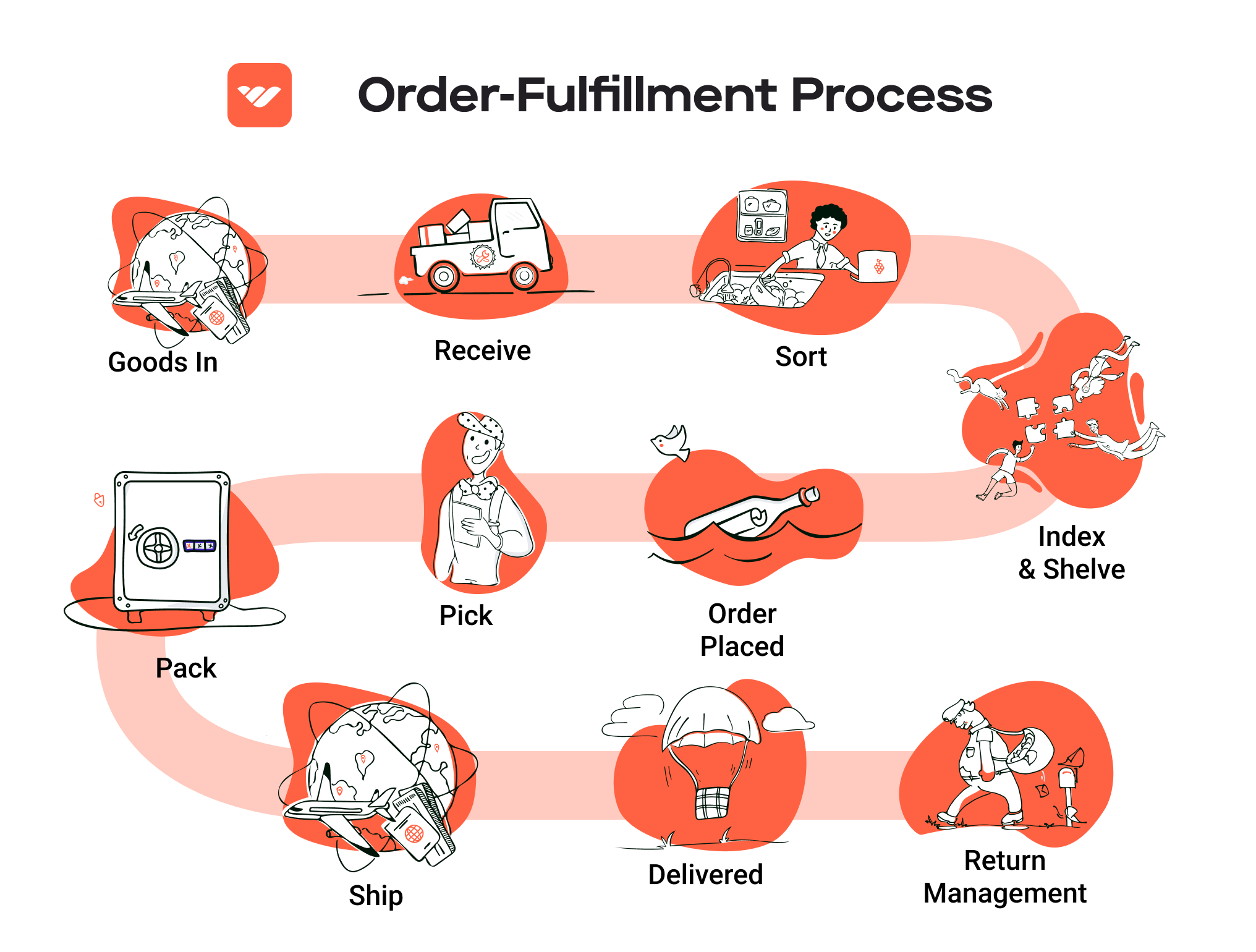
4. Scalability
FBA allows sellers to scale their businesses without the need for significant investment in warehouse space or staffing. As sales increase, sellers can send more inventory to Amazon, allowing them to focus on marketing and product development.
5. Simplified Returns Management
Amazon’s handling of returns simplifies the process for sellers, as they do not need to manage returns or customer service directly. This can save time and reduce the complexity of operations.
Cons of Using FBA
1. High Fees
FBA comes with various fees, including storage fees for keeping inventory in Amazon’s warehouses and fulfillment fees for each item sold. For some sellers, these costs can add up, significantly impacting profit margins.
2. Strict Inventory Rules
Amazon imposes strict rules regarding inventory management. Sellers must keep track of their inventory levels and ensure they comply with Amazon’s guidelines to avoid penalties or account suspensions.
3. Commingling Risks
When using FBA, sellers’ products may be commingled with inventory from other sellers. This can lead to issues with product quality and customer satisfaction, particularly if another seller’s product is shipped instead of yours.
4. Limited Branding Control
While FBA offers convenience, it limits sellers’ control over packaging and branding. Products are shipped in Amazon-branded packaging, which may detract from a seller’s brand experience.
5. Dependency on Amazon
Utilizing FBA means relying heavily on Amazon’s platform and policies. Any changes in Amazon’s algorithms, policies, or fees can directly affect your business operations and profitability.
Who is FBA Best For?
Fulfillment by Amazon is particularly beneficial for:
- Small to Medium-Sized Businesses: FBA allows smaller businesses to compete with larger ones by leveraging Amazon’s logistics and customer service.
- Entrepreneurs with High Sales Volume: Sellers who anticipate high sales volume will benefit from the scalability and efficiency of FBA.
- Sellers of Standardized Products: If your products are standardized and have a consistent demand, FBA can help maintain inventory without the complexities of fulfillment.
- E-commerce Brands Seeking Trust: Brands looking to enhance their credibility and reach a broader audience will find FBA’s customer trust and Prime eligibility advantageous.
- Multi-Channel Sellers: Businesses selling across multiple platforms can benefit from FBA’s multi-channel fulfillment capabilities, allowing for a streamlined order processing experience.
In conclusion, while FBA can provide significant advantages in terms of scalability, customer trust, and logistical ease, sellers must also weigh the potential downsides, including costs and reduced control over their branding. Evaluating your business model and goals will help determine if FBA is the right choice for your e-commerce strategy.
Core Services Offered by Fulfillment Centers
Inventory Management & Warehousing
Inventory management and warehousing are foundational services provided by fulfillment centers. This involves not only the storage of products but also the systematic tracking and management of inventory levels. Fulfillment centers utilize advanced inventory management systems to monitor stock levels, manage reorder points, and forecast demand. These systems integrate with e-commerce platforms, allowing businesses to gain real-time insights into their inventory status.
The primary benefit of effective inventory management is the reduction of stockouts and overstock situations. By maintaining optimal inventory levels, e-commerce businesses can ensure that they have the right products available to meet customer demand without incurring unnecessary holding costs. Additionally, fulfillment centers often provide scalable warehousing solutions, enabling businesses to adapt their inventory storage needs as they grow. This flexibility is crucial for businesses that experience seasonal fluctuations in demand or are navigating rapid growth phases.
Pick and Pack Services
Pick and pack services are a critical component of the order fulfillment process. This service includes the picking of products from the warehouse based on customer orders, followed by packing those items securely for shipping. Fulfillment centers employ trained staff and sophisticated picking technologies to enhance accuracy and efficiency in this process.
The benefits of pick and pack services are manifold. First, they significantly reduce the time it takes to fulfill an order, which is essential for maintaining customer satisfaction and loyalty. Fast order processing can lead to quicker shipping times, which is increasingly becoming a standard expectation among e-commerce consumers. Moreover, professional packing minimizes the risk of damage during transit, thereby reducing return rates and associated costs. By outsourcing this function, e-commerce businesses can focus on core activities such as marketing and product development, while leaving the logistics to experts.
Kitting and Assembly
Kitting and assembly services involve combining multiple products into a single package or kit before shipping. This can include bundling complementary products or assembling items that require some level of setup. Fulfillment centers provide this service to streamline the order fulfillment process, especially for businesses that sell complex products or promotional bundles.
The primary advantage of kitting and assembly is the enhanced customer experience it creates. By delivering products that are ready to use or that feature thoughtful combinations (like a gift set), businesses can increase perceived value and customer satisfaction. Additionally, kitting can optimize shipping costs by reducing the number of individual packages sent out, thus lowering overall shipping expenses. This service also simplifies inventory management for businesses, as they can track kits as singular units rather than as individual components.
Returns Management (Reverse Logistics)
Returns management, or reverse logistics, is an essential service offered by fulfillment centers that focuses on handling product returns efficiently. This includes processing returns, restocking items, and managing exchanges or refunds. Given the rise of online shopping, effective returns management has become a critical aspect of maintaining customer trust and satisfaction.
The benefits of robust returns management are significant. A streamlined returns process can enhance customer loyalty, as consumers are more likely to purchase from a retailer that offers hassle-free returns. Moreover, fulfillment centers often implement technology solutions to track return reasons and patterns, providing valuable insights that can inform product development and inventory decisions. By efficiently managing returns, businesses can minimize losses associated with unsold or returned inventory, ultimately contributing to a healthier bottom line.
In summary, the core services offered by fulfillment centers—inventory management and warehousing, pick and pack services, kitting and assembly, and returns management—are vital for e-commerce businesses looking to scale. These services not only enhance operational efficiency but also contribute to improved customer satisfaction and loyalty, making them indispensable for businesses in the competitive online marketplace.
How to Choose a Fulfillment Partner: A 6-Point Checklist
Location & Warehouse Network
Importance:
The geographical location of your fulfillment partner’s warehouses can significantly impact shipping times and costs. Ideally, your partner should have a network of warehouses that allows for efficient distribution across your target markets.
Questions to Ask:
– Where are your warehouses located, and do they cover the regions where my customers are based?
– How do you manage shipping times to ensure prompt delivery?
– Can you provide insights into your average shipping times for different regions?
– What is your strategy for scaling the warehouse network as my business grows?
Technology & Integrations
Importance:
A modern fulfillment partner should leverage technology to streamline operations. Robust software solutions facilitate real-time inventory tracking, order management, and reporting, which are critical for maintaining operational efficiency and enhancing customer experience.
Questions to Ask:
– What technology platform do you use for order management, and how does it integrate with my e-commerce platform?
– Can you provide real-time inventory visibility?
– How do you handle order tracking and notifications for customers?
– Are there APIs available for additional integrations with other tools I use (e.g., CRM, accounting software)?
Specializations (e.g., Cold Storage, Oversized Items)
Importance:
Depending on the nature of your products, you may require specific handling capabilities. For example, if you deal with perishable goods or oversized items, your fulfillment partner must have the appropriate facilities and expertise.
Questions to Ask:
– Do you have specialized facilities for my product type (e.g., climate-controlled storage for perishables)?
– How do you handle the unique challenges associated with my product category?
– What protocols do you have in place for quality control and product handling?
– Can you provide case studies or references from similar businesses you’ve worked with?
Scalability & Capacity
Importance:
As your business grows, your fulfillment needs will evolve. A suitable partner should be able to scale operations to meet your increasing order volume without compromising service quality.
Questions to Ask:
– What is your current capacity, and how do you manage seasonal fluctuations in order volume?
– How do you plan to accommodate my business growth over the next few years?
– Can you handle sudden spikes in demand, such as during promotional events or holidays?
– What are your lead times for onboarding additional inventory or expanding services?
Pricing and Contracts
Importance:
Understanding the pricing structure and contract terms is essential for budgeting and financial planning. Hidden fees can impact your overall costs, so clarity is crucial.
Questions to Ask:
– What is your pricing model (e.g., per order, per item, monthly fees)?
– Are there any additional fees for services like storage, returns, or special packaging?
– Can you provide a detailed breakdown of all costs involved?
– What are the terms of the contract, and is there flexibility for renegotiation as my business needs change?
Customer Support & Reviews
Importance:
Responsive customer support is vital for addressing issues quickly and maintaining smooth operations. Additionally, reviews and testimonials can provide insights into a partner’s reliability and service quality.
Questions to Ask:
– What is your customer support structure (e.g., dedicated account manager, 24/7 support)?
– How do you handle issues such as order discrepancies or shipping delays?
– Can you provide references or case studies from current or past clients?
– What feedback mechanisms do you have in place to ensure continuous improvement?
Conclusion
Choosing the right fulfillment partner is a critical decision that can greatly influence your e-commerce business’s success. By carefully considering these six key areas—location, technology, specializations, scalability, pricing, and customer support—you can make an informed choice that aligns with your operational goals and customer expectations. Each question listed will help you assess potential partners and ensure they can meet your specific needs as you scale your business.
Understanding Fulfillment Pricing: A Breakdown of Common Fees
Initial Setup Fees
When partnering with a fulfillment service, businesses often encounter initial setup fees. These fees typically cover the costs associated with onboarding your account, which can include system integration, inventory setup, and training on using the fulfillment platform. The calculation of these fees can vary significantly based on the complexity of your operations and the fulfillment provider’s pricing structure. For instance, a basic setup may cost a few hundred dollars, while more complex integrations involving custom software or extensive training could range into the thousands.
To minimize initial costs, businesses should consider selecting a provider with straightforward onboarding processes or those that offer tiered pricing based on the level of service required.
Receiving Fees
Receiving fees are charged when inventory arrives at the fulfillment center. This fee covers the labor and resources needed to unload, inspect, and enter the inventory into the system. Typically, receiving fees are calculated per pallet or per item, depending on the provider’s pricing model. For example, a common structure might be $50 per pallet or $0.25 per item received.
To ensure transparency and avoid unexpected charges, businesses should clarify what the receiving process entails and whether any additional fees apply, such as for damaged goods or discrepancies in shipment counts.
Storage Fees (per pallet/bin)
Storage fees are ongoing charges for keeping your inventory at the fulfillment center. These fees can be calculated on a per-pallet or per-bin basis, depending on how the warehouse is organized. For instance, a typical rate might be $15 to $30 per pallet per month. Some fulfillment centers may also charge based on the cubic space occupied by your products.
To manage storage costs effectively, businesses should keep an eye on inventory levels and turnover rates. Understanding your product demand can help you optimize your storage needs, potentially moving to a just-in-time inventory strategy to reduce fees.
Pick & Pack Fees (per item/order)
Pick & pack fees are associated with the process of selecting items from inventory and packing them for shipment. These fees can be structured either per item or per order, with common rates ranging from $1 to $5 per item, or a flat fee of $2 to $10 per order, depending on the complexity of the packing process. For instance, if an order contains multiple items, the pick fee may apply to each item, increasing the overall cost.
To keep these fees in check, businesses should evaluate the complexity of their product offerings and consider consolidating orders or optimizing packaging to reduce the number of picks required.
Shipping Fees
Shipping fees are a critical component of fulfillment pricing and can vary based on factors such as shipment weight, dimensions, destination, and carrier choice. Fulfillment centers typically pass their negotiated shipping rates onto customers, which can fluctuate based on volume and service level (standard, expedited, etc.).
Shipping fees can be calculated using a variety of methods, including flat-rate shipping, weight-based pricing, or dimensional weight pricing. For example, a flat rate might charge a fixed fee for shipping within a specific zone, while weight-based pricing would increase costs as the package weight rises.
To optimize shipping expenses, businesses should explore different shipping options, negotiate rates with carriers, and consider offering bundled shipping options to encourage larger purchases.
Tips for Getting an Accurate Quote
-
Provide Detailed Information: When requesting quotes, provide as much detail as possible about your product specifications, order volume, and expected growth rates. This information helps fulfillment providers give you a more accurate estimate.
-
Clarify Fee Structures: Ask for a breakdown of all potential fees, including any hidden charges that may arise during the fulfillment process.
-
Negotiate Terms: Don’t hesitate to negotiate terms, especially if you have a growing business that may lead to higher volumes. Some providers may offer discounts for long-term contracts or higher order volumes.
-
Consider Seasonal Fluctuations: If your business has seasonal peaks, inquire about how the fulfillment provider handles these fluctuations and whether fees will change during high-demand periods.
-
Request a Trial Period: If possible, arrange for a trial period to assess the fulfillment service’s performance and ensure that pricing aligns with your expectations before committing long-term.
By understanding these common fulfillment pricing models and following these tips, e-commerce businesses can make informed decisions that align with their operational needs and budget constraints.
Frequently Asked Questions (FAQs) about Fulfillment
1. What is Mercury Fulfillment?
Mercury Fulfillment is a comprehensive logistics solution designed to help e-commerce businesses manage their inventory, order processing, and shipping needs efficiently. By leveraging advanced technology and a secure marketplace platform, Mercury Fulfillment enables businesses to streamline operations, reduce costs, and enhance customer satisfaction through timely deliveries.
2. What is the difference between a warehouse and a fulfillment center?
A warehouse primarily serves as a storage space for goods, focusing on inventory management. In contrast, a fulfillment center is specifically designed to handle the entire order fulfillment process, including receiving, processing, and shipping orders directly to customers. Fulfillment centers often utilize advanced technology to optimize these processes and ensure rapid delivery.
3. What is a 3PL (Third-Party Logistics)?
A Third-Party Logistics provider (3PL) is a company that offers outsourced logistics services, which can include transportation, warehousing, inventory management, and order fulfillment. By partnering with a 3PL, businesses can scale their operations without the need to invest in their own logistics infrastructure, allowing them to focus on core competencies like marketing and product development.
4. How much do fulfillment services cost?
Fulfillment service costs can vary significantly based on factors such as order volume, storage space, shipping methods, and additional services like packaging and kitting. Generally, businesses can expect to pay a per-order fee, storage fees based on the amount of inventory stored, and shipping costs. It’s advisable to request quotes from multiple fulfillment providers to find a solution that fits your budget and needs.
5. How does Mercury Fulfillment ensure timely delivery?
Mercury Fulfillment utilizes a combination of strategic warehouse locations, advanced inventory management systems, and partnerships with reliable shipping carriers. By optimizing the fulfillment process and maintaining real-time inventory tracking, Mercury can ensure that orders are processed quickly and shipped without delay, improving overall customer satisfaction.
6. Can I customize my packaging with Mercury Fulfillment?
Yes, Mercury Fulfillment offers customizable packaging options to help businesses enhance their brand identity. This can include branded boxes, tissue paper, and packing slips, allowing you to create a memorable unboxing experience for your customers while maintaining brand consistency.
7. What types of products can Mercury Fulfillment handle?
Mercury Fulfillment is equipped to manage a diverse range of products, from promotional merchandise to complex inventory items. Their specialized fulfillment capabilities make it possible to handle both simple and intricate projects, ensuring that businesses of all sizes can find a solution that meets their specific needs.
8. How can I track my orders with Mercury Fulfillment?
Mercury Fulfillment provides clients with access to a secure online portal where they can track order status, inventory levels, and shipping details in real time. This transparency allows businesses to stay informed about their logistics operations and address any issues proactively.
9. What are the benefits of using Mercury Fulfillment for e-commerce businesses?
Using Mercury Fulfillment offers several advantages, including scalability, cost efficiency, and access to advanced technology. By outsourcing fulfillment, businesses can focus on growth strategies and customer engagement while ensuring that their logistics are managed by experts, ultimately enhancing the customer experience.
10. How do I get started with Mercury Fulfillment?
To begin utilizing Mercury Fulfillment, interested businesses should visit their website to request a consultation. During this process, you can discuss your specific needs, explore service options, and receive tailored solutions that align with your operational goals and growth plans.
Conclusion: Is Outsourcing Fulfillment the Right Move for Your Business?
Evaluating the Benefits of Outsourcing Fulfillment
Outsourcing fulfillment can be a transformative decision for your e-commerce business, offering several key benefits that can significantly impact your operations and growth trajectory. First and foremost, partnering with a fulfillment service allows you to save precious time. Instead of managing storage, packing, and shipping, you can focus on core business activities such as product development, marketing, and customer engagement. This shift not only enhances productivity but also ensures that your team can concentrate on strategic initiatives that drive sales.
Scalability is another compelling advantage. As your business grows, so do your fulfillment needs. A reliable fulfillment partner can adapt to fluctuations in order volume, seasonal spikes, and new product launches, providing you with the flexibility to scale operations without the headache of managing logistics internally. This adaptability is crucial in today’s fast-paced e-commerce landscape, where consumer demands can shift rapidly.
Furthermore, leveraging the expertise of a fulfillment service can improve your overall customer experience. These partners often have advanced technology and systems in place that streamline order processing, enhance inventory management, and ensure timely delivery. Their specialized knowledge in logistics can help reduce shipping errors, optimize delivery routes, and ultimately improve customer satisfaction.
However, it’s essential to choose the right fulfillment partner to align with your business goals and values. Conduct thorough research, assess their capabilities, and ensure they can meet your specific needs.
Call to Action
To determine if outsourcing fulfillment is the right move for your business, conduct an audit of your current shipping process. Evaluate your costs, efficiency, and customer feedback to identify potential areas for improvement. If your findings suggest that fulfillment challenges are hindering your growth, it may be time to explore partnerships that can propel your business forward.
Important Disclaimer
⚠️ Important Disclaimer
The information in this guide is for educational purposes. Fulfillment services, pricing, and platform features change frequently. Always conduct your own due diligence and consult with providers directly before making business decisions.
